Lattice diffusion treatment dramatically reduces your sapphire’s value by up to 99%, dropping prices from over $5,000 per carat for natural stones to just $1-20 per carat for treated gems. This process exposes sapphires to 10,000°F temperatures while lattice gases penetrate the stone’s structure, artificially enhancing color. You’ll need advanced testing like Secondary Ion Mass Spectrometry for accurate identification, as visual indicators can be subtle. Professional certification becomes essential when you’re considering the significant investment implications of this treatment.
Understanding the Lattice Diffusion Treatment Process
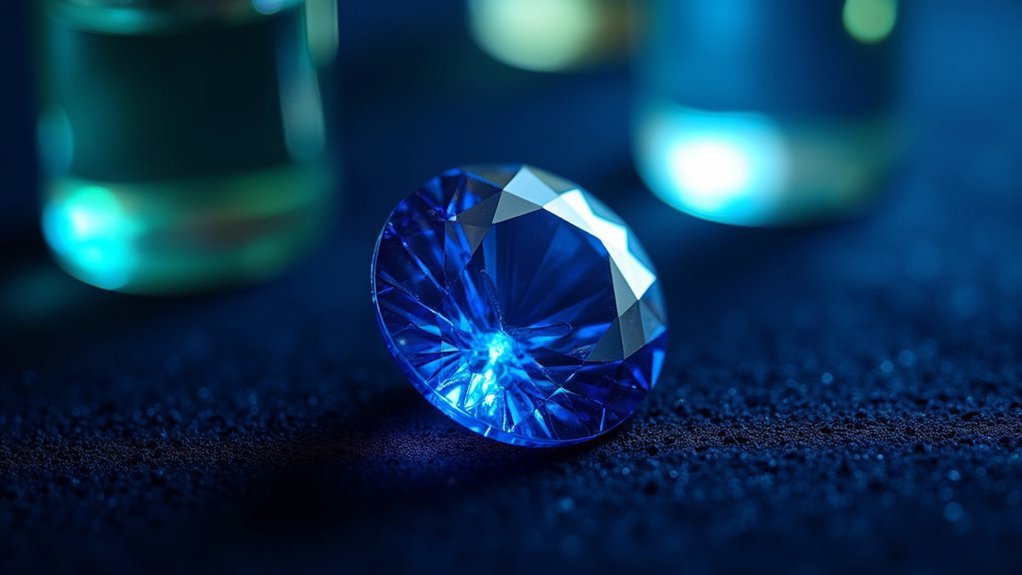
When you’re examining sapphires in the market, you’ll likely encounter stones that have undergone lattice diffusion treatment, a sophisticated process that fundamentally alters the gemstone’s appearance through controlled heat and chemical infusion.
This heat treatment involves exposing sapphires to approximately 10,000 degrees Fahrenheit within vacuum chambers, where lattice gases like argon or nitrogen penetrate the stone’s structure.
Beryllium diffusion, the most common variant, reaches deep into the sapphire’s interior, dramatically transforming colour in darker specimens.
While this sapphire treatment can create stunning blue sapphires, it greatly impacts market value compared to natural sapphires.
You’ll need advanced technology like Secondary Ion Mass Spectrometry to identify treated sapphires accurately, as visual inspection alone can’t distinguish between enhanced and untreated stones.
Market Value Differences Between Natural and Diffused Sapphires
Although lattice diffusion treatments can transform a sapphire’s appearance dramatically, they’ll slash its market value by up to 99%.
You’ll find treated sapphires priced between $1 to $20 per carat, while natural, unheated stones command over $5,000 per carat. This massive price difference stems from the artificial enhancement of color through beryllium or titanium diffusion, which doesn’t increase rarity.
Over 98% of today’s gemstones undergo heat treatments or diffusion processes.
You can identify treated stones by observing color concentrations along facet junctions and girdle edges. Your awareness of these treatment methods is essential when purchasing sapphires, as sellers often price diffused stones at fractions of their natural counterparts’ market value.
Understanding these distinctions protects you from overpaying for artificially enhanced gemstones.
Visual Indicators That Reveal Diffusion Treatment
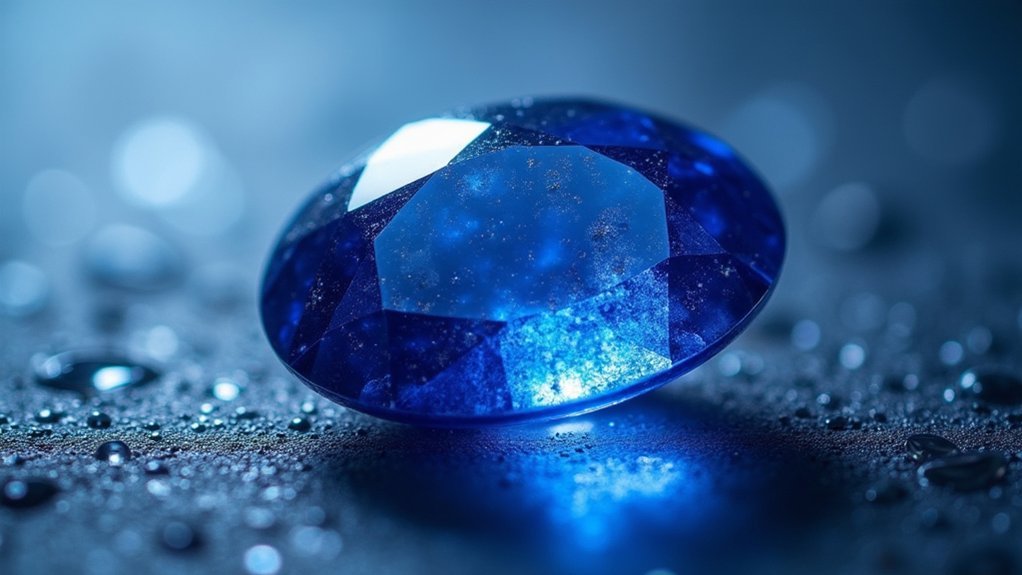
Since diffusion treatments leave distinctive fingerprints within sapphires, you can spot several telltale signs that reveal artificial enhancement. Lattice diffusion creates color concentrations along facet junctions and girdle edges, serving as primary visual indicators of sapphire treatments.
| Visual Indicator | Location | What You’ll See |
|---|---|---|
| Color concentrations | Facet junctions/girdle | Unnatural color buildup |
| Tension halos | Internal structure | Circular stress patterns |
| Gas bubbles | Glass-filled areas | Trapped air pockets |
| Color zoning | Throughout stone | Artificial banding |
Heat treatment and lattice diffusion produce tension halos and disk-shaped fractures within the stone’s structure. Under microscopic examination, you’ll notice gas bubbles indicating glass-filled regions. Color zoning appears as unnatural bands throughout artificially enhanced stones. Additionally, altered pleochroism creates inconsistent color changes when viewing from different angles, unlike natural sapphires’ stable characteristics.
Price Ranges and Investment Considerations for Treated Stones
Understanding these visual indicators becomes particularly important when you’re evaluating the financial aspects of sapphire purchases.
Lattice diffusion dramatically affects price ranges, with treated sapphires typically valued at $1-20 per carat compared to natural sapphires costing thousands. This significant difference in market value makes investment considerations essential for collectors and buyers.
Color concentrations along facet junctions signal diffusion treatment, directly impacting pricing decisions.
When color pools at facet edges, expect significantly lower market values due to lattice diffusion treatment.
While 95% of sapphires undergo some treatment, including heated sapphires and synthetic sapphire alternatives, lattice-diffused stones occupy the lower end of the value spectrum.
You’ll need reliable certification to verify treatment status, as the investment potential differs dramatically between treated and untreated stones.
Smart buyers always confirm treatment disclosure before making purchasing decisions.
Authentication Methods for Identifying Diffused Sapphires
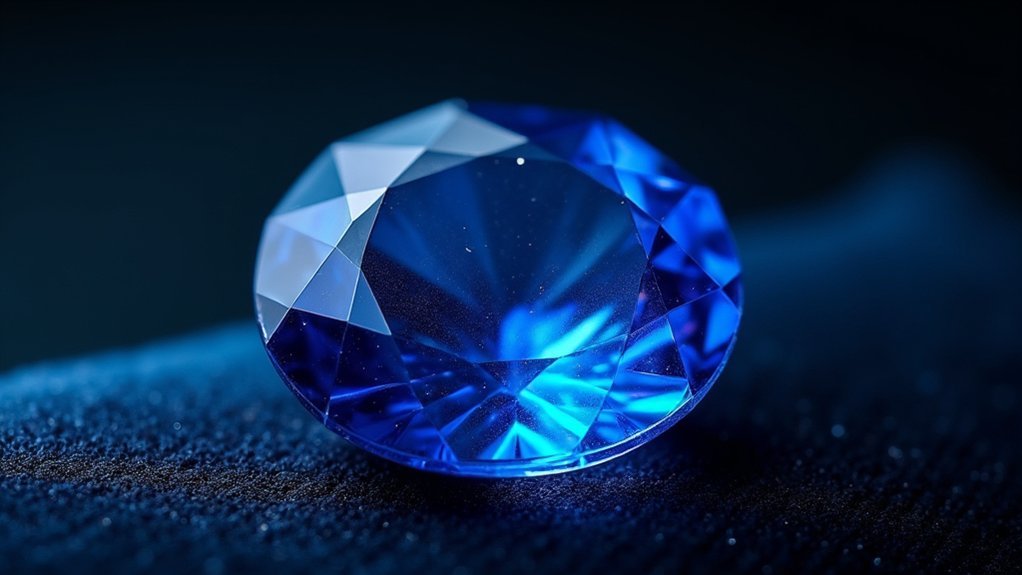
When you’re examining a sapphire for lattice diffusion treatment, visual inspection serves as your first line of defense against misidentification. Look for color concentrations along facet junctions and girdle edges, which typically indicate diffusion treatment presence.
| Authentication Methods | Key Indicators | Equipment Required |
|---|---|---|
| Visual Inspection | Color zoning, flash effects | Black light |
| Microscopic Analysis | Gas bubbles, structural fractures | Professional microscope |
| Laboratory Certification | H (Be) notation | GRS/GIA reports |
| Chemical Analysis | Beryllium/titanium presence | SIMS technology |
Microscopic inspection reveals glass-filled characteristics through bubble patterns and fractures in treated sapphires. You’ll need reliable certification from recognized labs like GRS and GIA, which provide specific indicators such as H (Be) for beryllium diffusion. Advanced technologies like Secondary Ion Mass Spectrometry offer definitive chemical composition analysis for authentication methods.
Frequently Asked Questions
Are Diffused Sapphires Worth Anything?
You’ll find diffused sapphires are worth something, typically $1-20 per carat, but they’re considerably less valuable than natural stones. Their superficial color treatment and reduced rarity make them affordable options rather than investment pieces.
What Is Lattice Diffusion of Sapphire?
You’ll find lattice diffusion involves heating sapphires to extreme temperatures around 10,000 degrees in vacuum chambers, infusing them with gases like beryllium to penetrate crystal structures and enhance colors artificially.
What Affects the Value of a Sapphire?
You’ll find that treatment level, color quality, clarity, carat weight, and origin determine sapphire value. Untreated stones command premium prices, while treated ones cost considerably less due to reduced rarity.
What Does It Mean if a Sapphire Is Diffused?
If your sapphire’s diffused, it’s undergone high-temperature treatment where elements like beryllium were infused into its surface layers, creating enhanced colors while leaving the stone’s core unchanged, considerably reducing its value.
In Summary
You’ll find that lattice diffusion greatly impacts sapphire values, typically reducing them by 70-90% compared to natural stones. When you’re buying sapphires, you can’t rely on visual inspection alone—professional gemological testing is essential for accurate identification. If you’re investing in sapphires, you’ll want to stick with untreated stones for better long-term value retention. Remember that treated sapphires aren’t inherently bad, but they’re priced accordingly in today’s market.

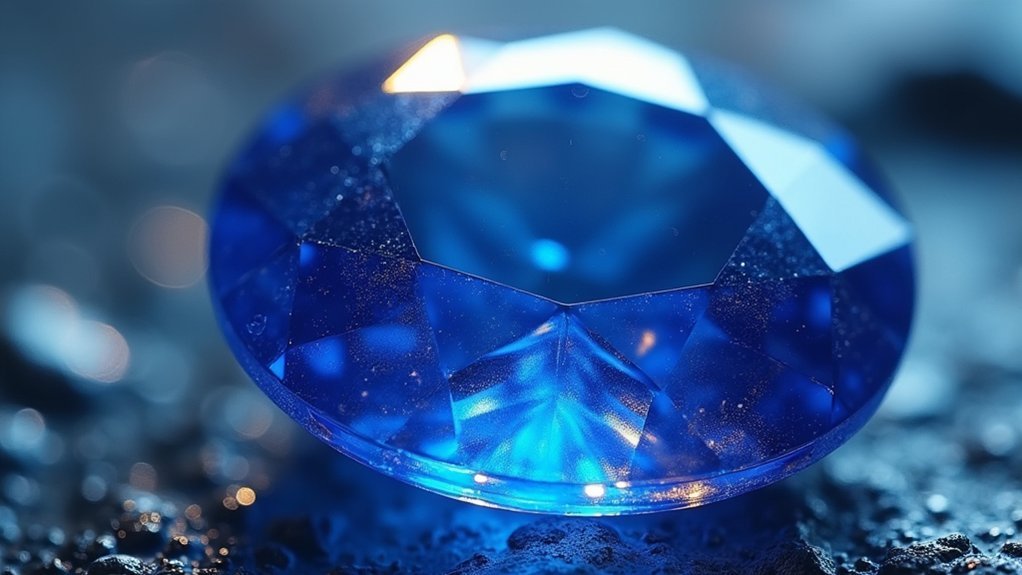
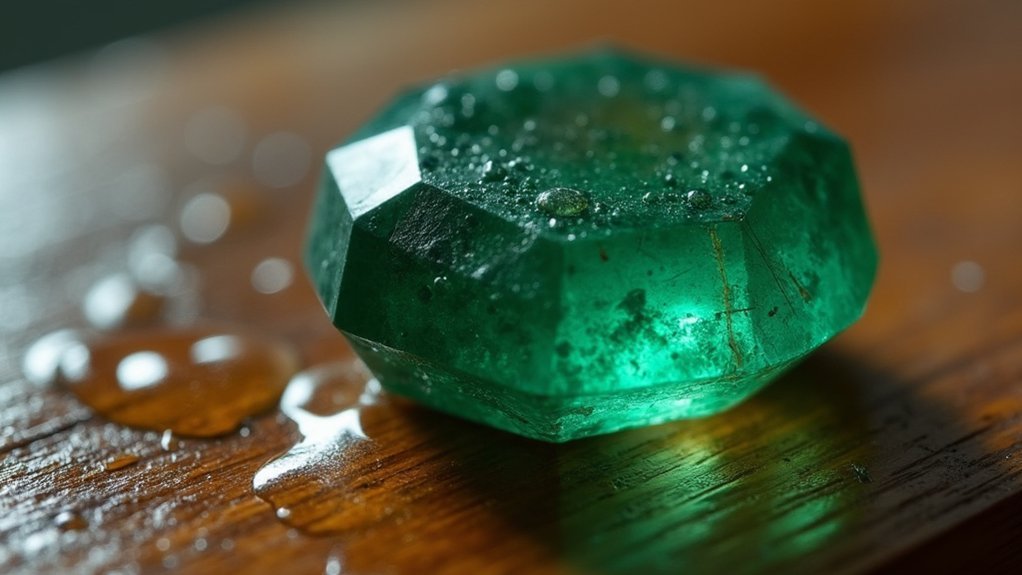
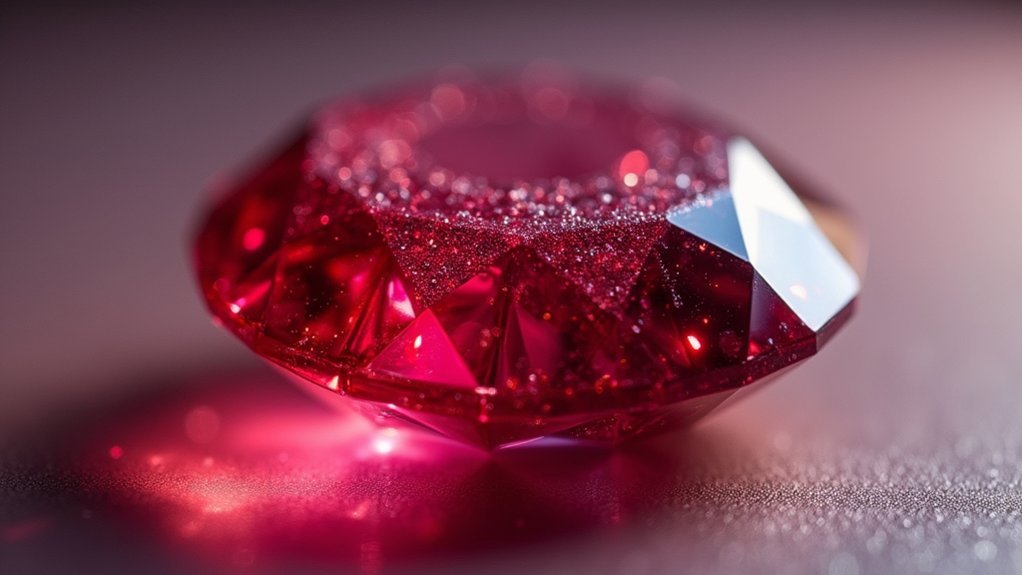
Leave a Reply